Science Conservation
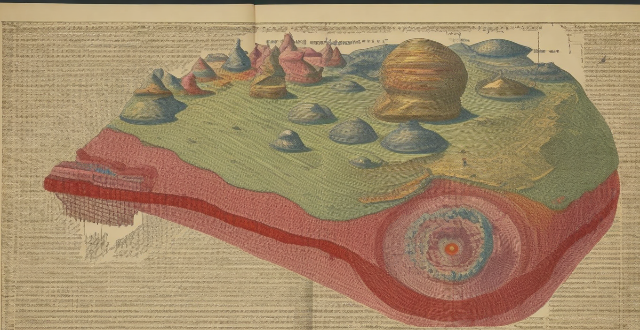
How can citizen science contribute to biodiversity research and conservation ?
This article explores the role of citizen science in enhancing biodiversity research and conservation efforts. It highlights how involving the general public in scientific projects can boost data collection, raise environmental awareness, and support conservation initiatives. The article also provides examples of successful citizen science projects that have contributed significantly to understanding and protecting biodiversity.

How can ecological protection areas be integrated with other conservation strategies ?
Integrating EPAs with other conservation strategies is crucial for their long-term viability and effectiveness. This involves developing comprehensive landscape approaches, incorporating community-based conservation, enhancing legal frameworks, promoting sustainable development practices, conducting regular research and monitoring, and implementing education and awareness programs. These measures ensure that conservation efforts extend beyond the boundaries of EPAs and into the broader ecosystem, involving local communities, addressing human activities, and fostering a culture of environmental stewardship.

What is climate science ?
Climate science, or climatology, is the study of Earth's climate and the factors that influence it. It involves understanding the complex interactions between the atmosphere, oceans, land surfaces, and living organisms that shape our planet's climate system. Key areas in climate science include atmospheric science, oceanography, biogeochemistry, paleoclimatology, climate modeling, solar system climatology, climate impacts research, climate policy analysis, remote sensing, and data assimilation. The importance of climate science lies in its ability to help us understand natural climate variability, predict climate change, inform policy decisions, protect ecosystems, and enhance public awareness about climate-related issues. By studying historical climate data and projecting future scenarios, scientists can predict how global warming will affect weather patterns and sea levels. This information is crucial for formulating policies aimed at reducing greenhouse gas emissions and preparing for the consequences of climate change. In conclusion, climate science is an interdisciplinary field that integrates knowledge from various scientific disciplines to provide a comprehensive understanding of Earth's climate system. Its findings are essential for addressing one of the most pressing challenges facing humanity today: climate change.
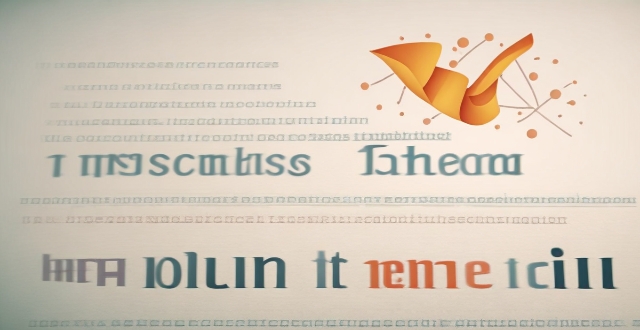
What are the latest advancements in sports science ?
The text discusses the latest advancements in sports science, including wearable technology, nutritional science, biomechanics, and mental training. Wearable technology provides real-time data on an athlete's performance, while nutritional science focuses on specialized diets and supplements. Biomechanics studies human movement to improve form and reduce injuries, while mental training techniques help build confidence and manage stress. These advancements have revolutionized athletic performance across all levels of competition.

What is the role of education in raising awareness about biodiversity conservation ?
Education plays a vital role in promoting awareness and understanding of biodiversity conservation. It fosters environmental stewardship, enhances scientific literacy, develops critical thinking skills, builds empathy, informs policy decisions, fosters interdisciplinary approaches, and generates public support for conservation efforts. Actionable steps include curriculum integration, hands-on learning experiences, interdisciplinary collaboration, community outreach, lifelong learning opportunities, research support, partnerships with organizations, technology use, international collaboration, and monitoring and evaluation to ensure continuous improvement in educational programs aimed at biodiversity conservation.

What are the most effective ways to engage young people in climate science communication ?
Engaging young people in climate science communication is crucial for creating a sustainable future. Here are some effective ways to do so: 1. Use interactive and engaging methods such as gaming and simulations, visualization tools, and interactive workshops to make complex climate concepts more accessible and fun to learn. 2. Involve young people in the process by involving them in participatory research, citizen science projects, and advocacy and activism to increase their ownership and interest in climate science. 3. Make it relevant to their lives by providing localized information, discussing career opportunities, and sharing personal stories to help young people understand the impact of climate change on their lives and communities. By using these strategies, we can inspire the next generation of climate leaders and create a more sustainable future for all.

What is the impact of climate change on biodiversity and conservation law ?
Climate change is a significant threat to biodiversity, affecting species distribution, abundance, and behavior. This has implications for conservation law, which aims to protect and manage biodiversity. The impact of climate change on biodiversity includes habitat loss and fragmentation, altered ecosystem functioning, and increased risk of species extinction. Conservation law must evolve to address these challenges, incorporating resilience measures into conservation strategies and fostering collaboration across sectors. By taking a proactive approach, we can help ensure that future generations continue to benefit from the diverse array of species and ecosystems that make up our planet's natural heritage.

What are the most effective methods for disseminating climate science information ?
To disseminate climate science information effectively, a multi-pronged approach combining educational programs, digital media, partnerships, community outreach, and policy advocacy should be employed. This involves integrating climate science into school curricula, organizing public awareness campaigns, leveraging social media, creating dedicated websites, partnering with government agencies and NGOs, hosting local events, and engaging in lobbying efforts and grassroots movements. By doing so, we can increase public understanding of climate change and foster a culture of sustainability.

What is the impact of climate science misinformation on public perception and behavior ?
Text: Impact of Climate Science Misinformation on Public Perception and Behavior Climate science misinformation can lead to increased skepticism towards climate change, polarization of views, undermining of trust in science, influence on policy decisions, and delayed action on addressing climate change. To combat these effects, promoting accurate information about climate change is crucial through education, media campaigns, and transparent communication from scientists and policymakers.

How do I implement water conservation measures at home ?
Water conservation is crucial for sustaining the environment and ensuring future generations have access to clean water. Here's how you can implement water conservation measures in your home: identify areas of water consumption, repair leaks promptly, collect rainwater, educate family members, and regularly review your habits. By implementing these measures, you can significantly reduce your home's water usage and contribute to a more sustainable future for our planet.
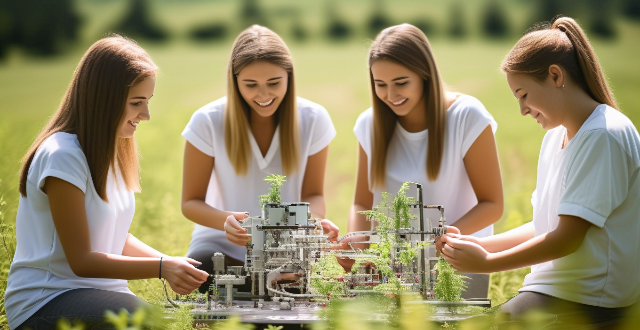
How can we encourage more girls to pursue careers in science and technology ?
To encourage more girls to pursue careers in science and technology, several strategies can be employed, including introducing female role models in STEM fields, offering targeted scholarships, creating supportive learning environments, fostering industry collaboration, promoting diverse perspectives, building confidence, improving media representation, advocating for policy changes, and engaging communities. Implementing these measures can help create an environment where girls feel empowered to explore and excel in science and technology.

How have advancements in materials science impacted sports equipment design ?
Advancements in materials science have significantly impacted sports equipment design, improving durability, performance, safety, comfort, and customization. Examples include carbon fiber bats, advanced composite tennis racquets, titanium golf clubs, aerodynamic cycling helmets, shock-absorbing running shoes, breathable athletic apparel, customized orthotics, and personalized mouthguards. These innovations not only enhance the athletes' performance but also reduce waste, making it an environmentally friendly option.

Can you share a story about a woman who has made significant contributions in science or technology ?
Marie Curie's life and work epitomize scientific breakthrough and personal resilience. Born in a restricted society, she overcame numerous obstacles to become the first woman to win a Nobel Prize and the only person to win in two different sciences. Her pioneering research on radioactivity led to advancements in physics, chemistry, medicine, and technology. Despite facing significant gender bias, Marie's dedication and achievements have made her a timeless inspiration for scientists worldwide.

What role do governments play in environmental conservation efforts ?
Governments play a crucial role in environmental conservation efforts by creating and implementing policies, regulations, and programs that promote sustainable development and protect natural resources. They can contribute to environmental conservation through legislation and regulation, public awareness campaigns, financial incentives and subsidies, international cooperation, and conservation programs. By taking these actions, governments can help ensure a sustainable future for our planet.

How do we ensure that climate decisions are based on sound science ?
The text discusses how to ensure that climate decisions are based on sound science. It suggests a multi-faceted approach that includes ensuring data quality and integrity, promoting interdisciplinary collaboration, and enhancing public understanding and involvement. The author emphasizes the importance of rigorous research, maintaining data integrity, encouraging collaboration between different fields, integrating traditional knowledge and local expertise, educating the public about climate science, and encouraging public participation in decision-making processes. By adopting these strategies, we can make informed decisions that effectively address the challenges posed by climate change.

What are some tips for making science experiments at home for educational purposes ?
Science experiments are a great way to engage children in learning about the natural world around them. Here are some tips for conducting science experiments at home for educational purposes: ## 1\. Choose Age-Appropriate Experiments Select experiments that are suitable for your child's age and ability level. Younger children may enjoy simple experiments involving colors, shapes, and basic physical properties, while older children can tackle more complex concepts such as chemical reactions or electricity. ## 2\. Gather Materials in Advance Make sure you have all the necessary materials before starting the experiment. This will help avoid interruptions and frustration during the process. Create a list of required items and gather them ahead of time. ## 3\. Follow Safety Guidelines Safety should always be a top priority when conducting science experiments at home. Ensure that you and your child follow proper safety guidelines, such as wearing protective gear (e.g., goggles, gloves) and working in a well-ventilated area. ## 4\. Involve Your Child in the Process Encourage your child to participate in every step of the experiment, from planning to execution. This will not only make the experience more enjoyable but also help them develop critical thinking skills and problem-solving abilities. ## 5\. Observe and Record Results Observing and recording results is an essential part of any scientific experiment. Encourage your child to take notes throughout the process, documenting their observations and findings. This will help them understand the importance of data collection and analysis in science. ## 6\. Discuss Results and Implications After completing the experiment, discuss the results with your child. Ask questions about what they learned, how the experiment could be improved, and what implications their findings might have on real-world applications. This will help foster their curiosity and interest in science. ## 7\. Clean Up Properly Teach your child the importance of cleaning up after themselves by ensuring that all materials are properly disposed of and surfaces are wiped down. This will help maintain a safe and organized environment for future experiments.

How do climate targets relate to ecosystem conservation efforts ?
The text discusses the interconnection between climate targets and ecosystem conservation efforts, emphasizing that both are essential for a sustainable future. Climate targets focus on reducing greenhouse gas emissions and adapting to climate change impacts, while ecosystem conservation aims to protect biodiversity and maintain ecological processes. The two concepts are closely related, as climate change affects ecosystems, and ecosystems play a role in climate regulation. An integrated approach combining these efforts can lead to more effective outcomes, such as reforestation projects that sequester carbon and provide habitat for wildlife. Collaboration between various stakeholders is crucial for aligning climate targets with ecosystem conservation efforts.
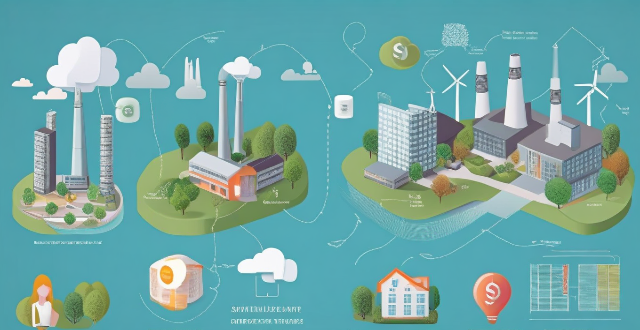
What is the relationship between energy conservation and sustainable development ?
In summary, energy conservation and sustainable development are interconnected concepts that share common goals. Energy conservation involves reducing wasteful consumption of energy resources, while sustainable development aims to balance economic growth, social progress, and environmental protection. The relationship between these two concepts is mutually reinforcing, with energy efficiency being a key component of both. Renewable energy sources, circular economy practices, and effective policy and governance structures are also essential for achieving sustainability goals. By prioritizing these principles, we can work towards a more sustainable future for ourselves and future generations.

How does ecological design contribute to biodiversity and conservation efforts ?
Ecological design is a crucial approach to enhancing biodiversity and supporting conservation efforts. It integrates principles of ecology and sustainability into the built environment, aiming to minimize negative impacts on natural ecosystems while promoting their health and resilience. Ecological design contributes to these vital efforts by minimizing habitat destruction, promoting ecosystem services, enhancing connectivity, supporting conservation efforts, and implementing best practices. By integrating ecological principles into the built environment, we can create spaces that coexist harmoniously with nature, contributing to a future where both humanity and wildlife thrive.

What is the relationship between waste reduction and energy conservation ?
The article discusses the relationship between waste reduction and energy conservation, highlighting their importance in promoting sustainable development. Waste reduction strategies such as recycling, composting, reusing materials, and reducing packaging conserve natural resources, reduce landfill space, and lower greenhouse gas emissions. Energy conservation measures like using energy-efficient appliances, improving insulation, and promoting renewable energy sources lead to lower energy costs, reduced greenhouse gas emissions, and promote sustainable development. The practices are interconnected, with recycling saving energy, composting reducing energy use, reducing packaging saving energy, energy-efficient appliances reducing waste, and promotion of renewable energy sources conserving energy and reducing waste.
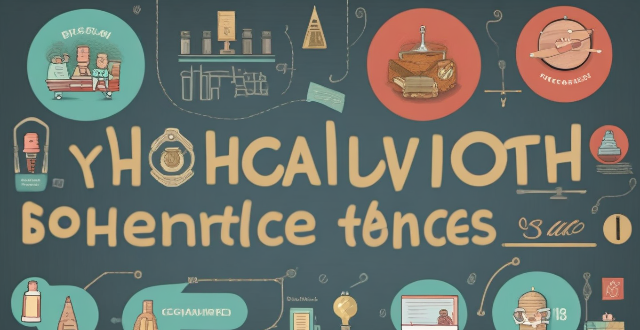
What are the psychological barriers to accepting climate science, and how can they be overcome ?
The text discusses psychological barriers to accepting climate science, including cognitive dissonance, confirmation bias, the scary world scenario, mistrust of science, perceived lack of control, narratives of doom, tribalism, and optimism bias. Strategies for overcoming these barriers involve education and awareness, inclusivity and dialogue, and empowerment and action. By addressing these barriers and implementing strategies for change, a more informed and engaged public can be created to tackle the challenges of climate change head-on.

How do we overcome the challenges of communicating complex climate science concepts to non-scientists ?
Overcoming the Challenges of Communicating Complex Climate Science Concepts to Non-Scientists: Tips and Strategies for Making Climate Science Accessible and Understandable.

How do climate policies intersect with other environmental initiatives, such as biodiversity conservation ?
The text discusses the intersection of climate policies and biodiversity conservation, highlighting the importance of integrating these initiatives for a sustainable future. It emphasizes reducing greenhouse gas emissions, protecting ecosystems, promoting sustainable land use practices, encouraging collaboration, and integrating climate change into biodiversity conservation strategies as key points of intersection. The benefits of integration include enhanced ecosystem resilience, improved carbon sequestration, increased public awareness, more efficient use of resources, and greater policy coherence.
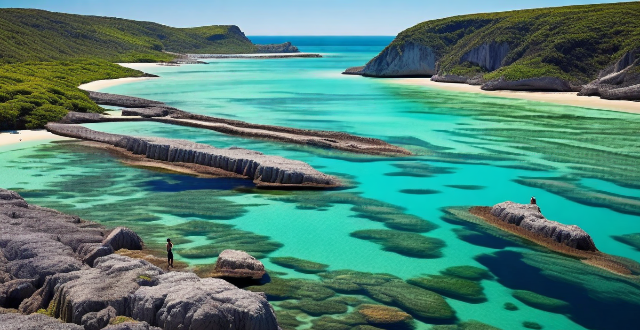
Can I participate in any volunteer programs related to wildlife conservation during my travels ?
Participating in wildlife conservation volunteer programs during travels offers a chance to contribute to important conservation efforts while gaining a deeper understanding of the natural world and its challenges. Options include working in national parks, wildlife sanctuaries, marine conservation projects, research initiatives, and community-based conservation efforts worldwide. To get involved, one should research, contact organizations, prepare for the physical and emotional demands, commit by arranging travel plans and financial contributions, and finally participate in the program.

How can urban planning contribute to biodiversity conservation ?
Urban planning is crucial for managing urban growth and ensuring sustainable development. One area where it can make a significant impact is in biodiversity conservation, which is essential for maintaining ecosystem services such as pollination and water purification. Strategies for incorporating biodiversity conservation into urban planning include creating green spaces and parks, promoting sustainable transportation, implementing effective water management practices, encouraging waste reduction and recycling programs, and engaging communities in conservation efforts. By adopting these strategies, cities can become more livable while supporting both human well-being and biodiversity conservation.
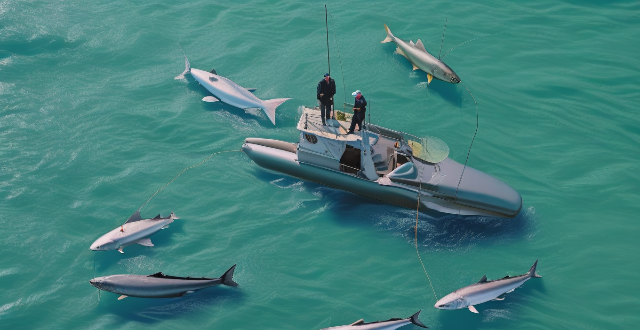
Are there any international agreements or policies addressing the interplay between climate change and the conservation of fisheries ?
The interconnected issues of climate change and fisheries conservation are addressed through various international agreements and policies. The UNFCCC aims to stabilize greenhouse gas concentrations, indirectly supporting fisheries conservation. UNCLOS provides a legal framework for ocean governance and resource management, promoting cooperation in managing fish stocks. The CBD focuses on biodiversity conservation and sustainable use of resources, acknowledging the impacts of climate change on ecosystems vital for fisheries. RFMOs manage fisheries in specific regions, incorporating climate change considerations into their strategies. National policies integrate climate action with fisheries conservation measures. Together, these frameworks work towards sustainable management of climate change and fisheries conservation.
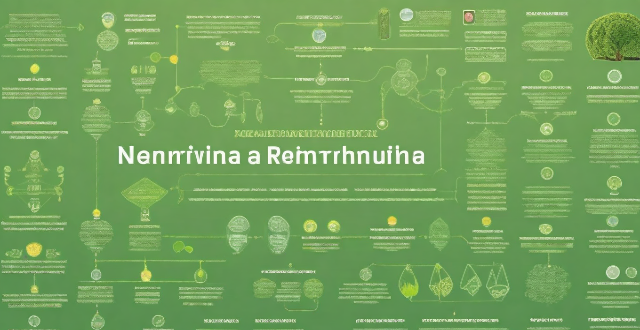
Can you provide examples of successful knowledge frameworks in various disciplines ?
Knowledge frameworks are structured approaches to organizing information within a field of study or practice. Successful examples include the human body systems in medicine, the OSI model in computer science, the language acquisition framework in linguistics, SWOT analysis in business, the ecosystem services framework in environmental science, and Bloom's Taxonomy in education. These frameworks facilitate specialized knowledge, standardize protocol development, guide teaching methods, support decision-making processes, highlight interdependence between natural systems and human well-being, and promote higher-order thinking skills.

What initiatives can be taken to improve scientific literacy among women ?
Scientific literacy is important for making informed decisions about health, environment, and technology. Women often face barriers to accessing scientific education and resources. To improve scientific literacy among women, initiatives such as educational programs, community outreach, media representation, and policy changes can be taken. These include integrating STEM subjects into the school curriculum, offering girls-only classes, connecting young girls with female role models in STEM fields, establishing community-based science clubs for women of all ages, organizing public lectures by women scientists, conducting workshops and training sessions on various scientific topics, highlighting stories of successful women in science through media platforms, encouraging more women to pursue careers in science journalism, utilizing social media platforms to create awareness about scientific issues affecting women's lives, advocating for increased funding for educational programs and research initiatives focused on improving women's participation in STEM fields, lobbying for policies that ensure equal opportunities for women in science education and employment, and implementing mandatory gender bias training for educators and professionals working in STEM fields. By implementing these initiatives, we can create a more inclusive environment that encourages women to explore and contribute to the field of science.

How does eco-tourism contribute to conservation efforts ?
Eco-tourism, or ecological tourism, plays a crucial role in conservation efforts by fostering sustainable practices and raising awareness about the importance of preserving biodiversity and ecosystems. It contributes to conservation in several ways: 1. **Raising Environmental Awareness**: Informed decision-making and behavior changes support conservation goals through educational opportunities provided during eco-tourism experiences. 2. **Direct Conservation Funding**: Fees for park entry, donations to local conservation groups, and investments in infrastructure that benefits both tourists and wildlife directly fund conservation projects. 3. **Encouraging Sustainable Practices**: By promoting eco-friendly transportation, recycling, composting, and community involvement in sustainable practices, eco-tourism reduces the overall environmental footprint of tourism activities. 4. **Supporting Local Economies**: Eco-tourism supports local economies, creating an incentive for communities to protect their natural resources as they rely on them for income. 5. **Protecting Habitats and Biodiversity**: Attracting visitors to protected areas or regions where conservation is a priority helps maintain healthy ecosystems and diverse wildlife populations. Overall, eco-tourism demonstrates that tourism can be a force for good when it operates with a focus on ecological sustainability and community involvement.